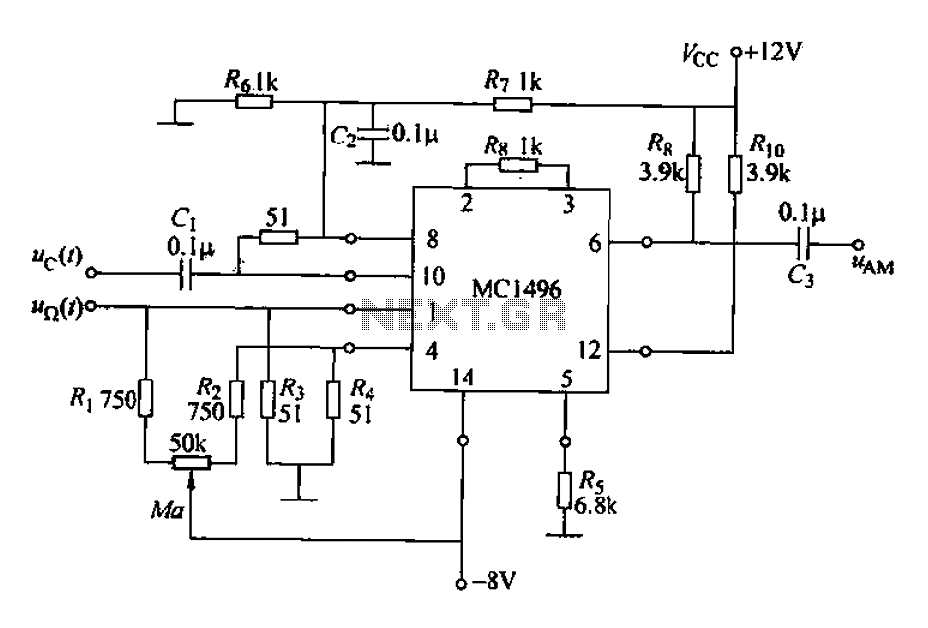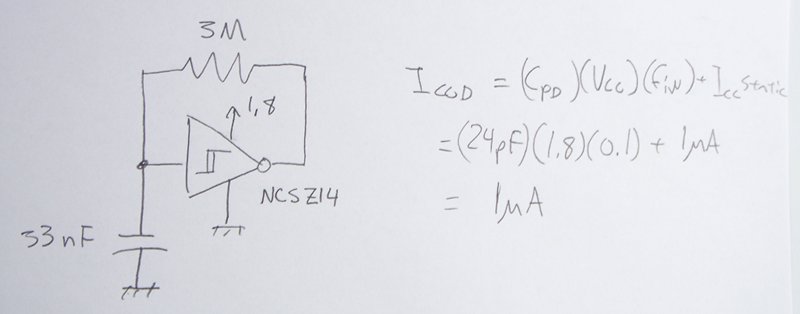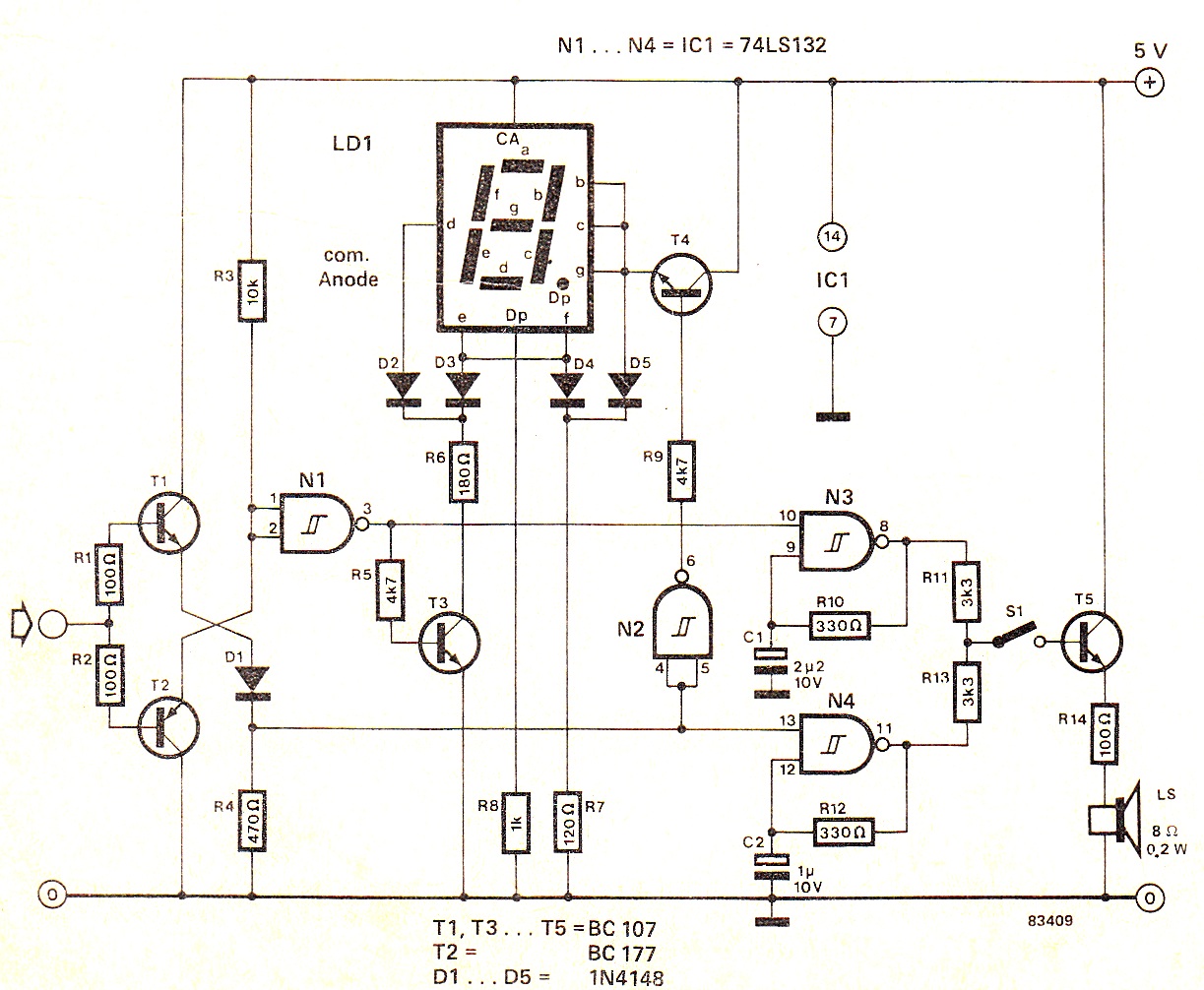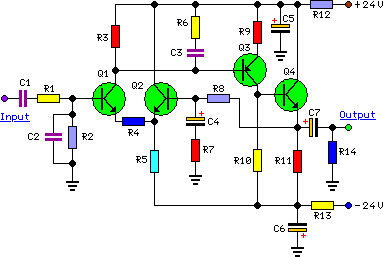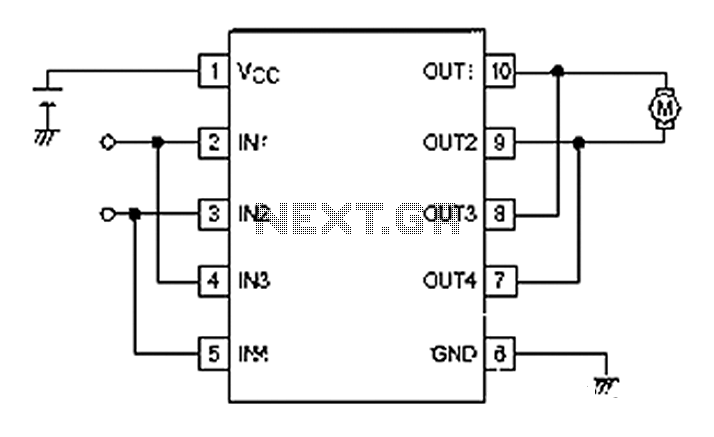
Pull transistor relay delay circuit diagrams
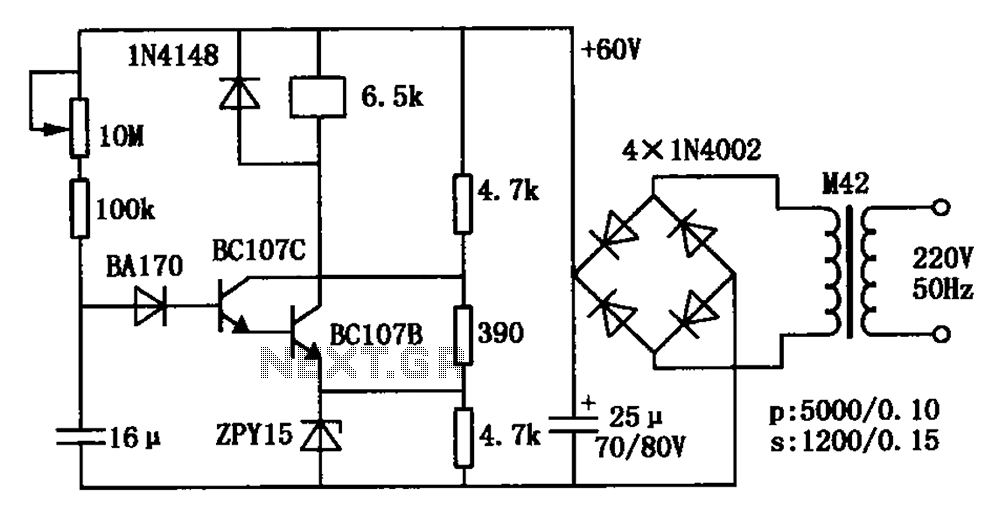
The circuit is a relay delay pull transistor configuration. Initially, when powered, the 16 µF capacitor has a voltage of zero, resulting in both transistors being off, and the relay remains inactive. As the 16 µF capacitor charges over time and the voltage rises to a sufficient level, both transistors are activated, causing the relay to engage after a delay. The maximum delay time can reach up to 60 seconds, and this delay can be adjusted using a 10 MΩ resistor.
The relay delay pull transistor circuit operates on the principle of a timing delay created by the charging of a capacitor. Upon power-up, the circuit begins with the 16 µF capacitor uncharged, resulting in zero voltage across its terminals. This state keeps both transistors in the off state, preventing any current from flowing through the relay coil, thus keeping the relay deactivated.
As the circuit remains powered, the capacitor begins to charge through the resistor connected in series. The time constant of this charging process is influenced by the values of the capacitor and the resistor. The voltage across the capacitor increases gradually, following an exponential curve defined by the formula V(t) = V_max(1 - e^(-t/RC)), where V_max is the supply voltage, R is the resistance, and C is the capacitance.
Once the voltage across the capacitor reaches the threshold level necessary to turn on the transistors, both transistors switch to the on state, allowing current to flow through the relay coil. This action energizes the relay, closing its contacts and activating any connected load. The duration of the delay, which can be adjusted up to 60 seconds, is determined by the values of the capacitor and the 10 MΩ resistor. By changing the resistance, the charging time of the capacitor can be modified, thus varying the delay before the relay is pulled in.
This circuit is particularly useful in applications where a delayed response is required, such as in timers, automated systems, or safety interlocks, ensuring that certain actions occur after a predetermined period following the application of power. As shown relay delay pull transistor circuit. Just power, 16 F capacitor voltage is zero, two transistors are off, the relay does not operate. With 16 F capacitor charge, over a period of time to which the voltage reaches a high level, two transistors are turned on, the relay delay pull. The delay time of up to 60s. Delay time can be adjusted by 10M resistor.
The relay delay pull transistor circuit operates on the principle of a timing delay created by the charging of a capacitor. Upon power-up, the circuit begins with the 16 µF capacitor uncharged, resulting in zero voltage across its terminals. This state keeps both transistors in the off state, preventing any current from flowing through the relay coil, thus keeping the relay deactivated.
As the circuit remains powered, the capacitor begins to charge through the resistor connected in series. The time constant of this charging process is influenced by the values of the capacitor and the resistor. The voltage across the capacitor increases gradually, following an exponential curve defined by the formula V(t) = V_max(1 - e^(-t/RC)), where V_max is the supply voltage, R is the resistance, and C is the capacitance.
Once the voltage across the capacitor reaches the threshold level necessary to turn on the transistors, both transistors switch to the on state, allowing current to flow through the relay coil. This action energizes the relay, closing its contacts and activating any connected load. The duration of the delay, which can be adjusted up to 60 seconds, is determined by the values of the capacitor and the 10 MΩ resistor. By changing the resistance, the charging time of the capacitor can be modified, thus varying the delay before the relay is pulled in.
This circuit is particularly useful in applications where a delayed response is required, such as in timers, automated systems, or safety interlocks, ensuring that certain actions occur after a predetermined period following the application of power. As shown relay delay pull transistor circuit. Just power, 16 F capacitor voltage is zero, two transistors are off, the relay does not operate. With 16 F capacitor charge, over a period of time to which the voltage reaches a high level, two transistors are turned on, the relay delay pull. The delay time of up to 60s. Delay time can be adjusted by 10M resistor.
